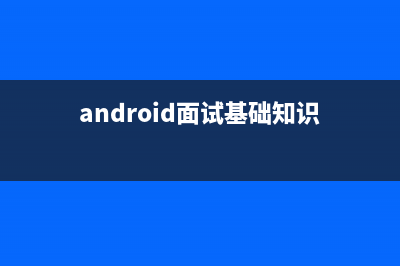位置: 编程技术 - 正文
cocos roadmap
编辑:rootadmin推荐整理分享cocos roadmap,希望有所帮助,仅作参考,欢迎阅读内容。
文章相关热门搜索词:,内容如对您有帮助,希望把文章链接给更多的朋友!
Cocos2d (v.3.0) rendering pipeline roadmap
(the vision)
The way currently Cocos2d does rendering is good but it is beginning to feel somehow antiquate and moreover it doesn’t actually leverage modern multi core CPUs so popular nowadays on most modern tablets and mobile phones.
So we want to re design Cocos renderer, for making it more performing, elegant, scalable, flexible but still simple to use and to understand. Also we want to maintain that same familiar API that current Cocos2d users will feel immediately comfortable with, without having to bother about what’s changed or new under the hood.
We will do this maintaining the same key cornerstone concepts Cocos2d users get to know and like as Scenes, Nodes, Layers, Sprites.
What (the goals)
Here is a high level view of the new features and improvements we would like to achieve in Cocos2d v.3.0:
Decouple the scene graph from the renderer
Visiting nodes issues graphics commands and put them on a queue, but doesn’t actually invoke any OpenGL rendering code
Viewing frustum Geometry culling
Sprites (and geometries more in general) not visible from the camera’s point of view be automatically removed from the current frame and not rendered
Rendering on a thread
The execution of all the rendering commands (i.e. OpenGL calls) will be moved to different thread than the main one (this will allow for better parallelism and usage of more than one CPUs cores where possible)
Automatic batching
Efficiently reduces the number of draw calls (automatically) batching them together when possible (i.e. sprites using the same material)
(Node based) Customizable rendering
As in the current version of Cocos, users will still be able (if needed) to customize rendering on a per node basis, calling OpenGL commands directly, disregarding the official renderer (but possibly incurring on worst performances)
How (the plan)
Central to the new design is the notionCommandQueue. While visiting a node, rendering will not call OpenGL commands directly anymore (as currently is the case); it will instead push CocosGraphicsCommands to a queue. Commands In the queue will subsequently be read by the rendering backend, processed as needed and pushed to the actual rendering API (i.e. OpenGL) (see picture)
The rendering backend (running on his own thread) will in turn pop graphics commands from the queue, process them and actually execute them. Any locking or CPU expensive OpenGL commands will be then executed from the back-end thread, letting Cocos’ main thread free continue working on parsing the scene graph or doing other non rendering related tasks. This will help parallelism and will allow for using multi core CPU’s (see picture)
With Cocos2d-x 3. we also want to introduce the concept ofautomatic batching. In fact we believe reducing the number of draw calls and render device state changes will improve drastically rendering speed.

In order to achieve very good batching, we would like to introduce also a new concept of “attributes” for Layers (formally CCLayer). There are going to (at least) 3 new Layer attributes:
Unordered
Static
Batch
Unordered Layer (formally CCLayer)
We want now focus on Unordered Layers, which are going to help achieving auto batching for improving rendering performance.
Rendering order in Cocos2d is dictated by the “order” nodes are arranged in the scene graph (see picture)
This is still going to be true still in V.3.0 unless the Layer is tagged as Unordered.
The Unordered attribute will instruct the Layer to disregard rendering order for all of his children (see picture)
The graphics commands will then be put in the CommandQueue and a special “unordered tag” will be place in the command queue as well for instructing the rendered to disregard the order and re arrange graphics commands so to render all the primitives using the same material in one draw call. Rendering all primitives (that use the same “material”) in one go will make rendering much faster, especially on mobile devices.
Static Layer
Layers tagged as static, will be treated as if all children will not going to be translated/rotated/zoomed (transformed) during the entire lifespan of the layer. This will allow Cocos performing expensive operations as matrices concatenation or computing culling information (i.e. quad-tree) only once (typically before the first rendering pass) improving drastically performance. Note that sprites in a static Layer can still be “animated” as far as they’re not transformed or scaled.
Batch Layer
A batch layers will behave very similarly to how a Batch Node (CCBatchNode) currently works in Cocos2d. All the children of a batch layer will HAVE to use the same “material” thus allowing the front end to combine all the draw calls for that layer in one single one. (Erroneously) Adding children that use a different material to a Batch Layer will trigger an Assert ().
Automatic Culling
To do
Rendering context (RenderBucket, RenderTarget, Camera, viewport)
To do
Rendering and materials system
To do
Customize rendering for nodes
To do
cocos2d-x 引擎分析:如何实现跨平台 怎么样使用Cocos2d-x快速开发游戏,方法很简单,你可以看看其自带的例程,或者从网上搜索教程,运行起第一个SceneHelloWorldScene,然后在HelloWorldScene里面
/*--------------创建一个Scene的2个示例--------------*/ //第一种:创建一个普通的Scene//从App入口AppDelegate找到这样两行代码://创建一个Scene对象的指针autoscene=HelloWorld::createScene();//导演运行这个场景(第一次
关于cocos2d-x-3.x版本环境的搭建和自己创建工程的步骤 (一)环境搭建RichardMillings--::次阅读最近3.2版本更新出來了!这是自2.x分支以来修复了超过个bug,3.2版本是目前为止,官方发布的最稳
标签: cocos roadmap
本文链接地址:https://www.jiuchutong.com/biancheng/369149.html 转载请保留说明!上一篇:各种回调:定时器schedule、普通回调callFunc、菜单回调menu_selector、事件回调event_selector(回调阶段)





